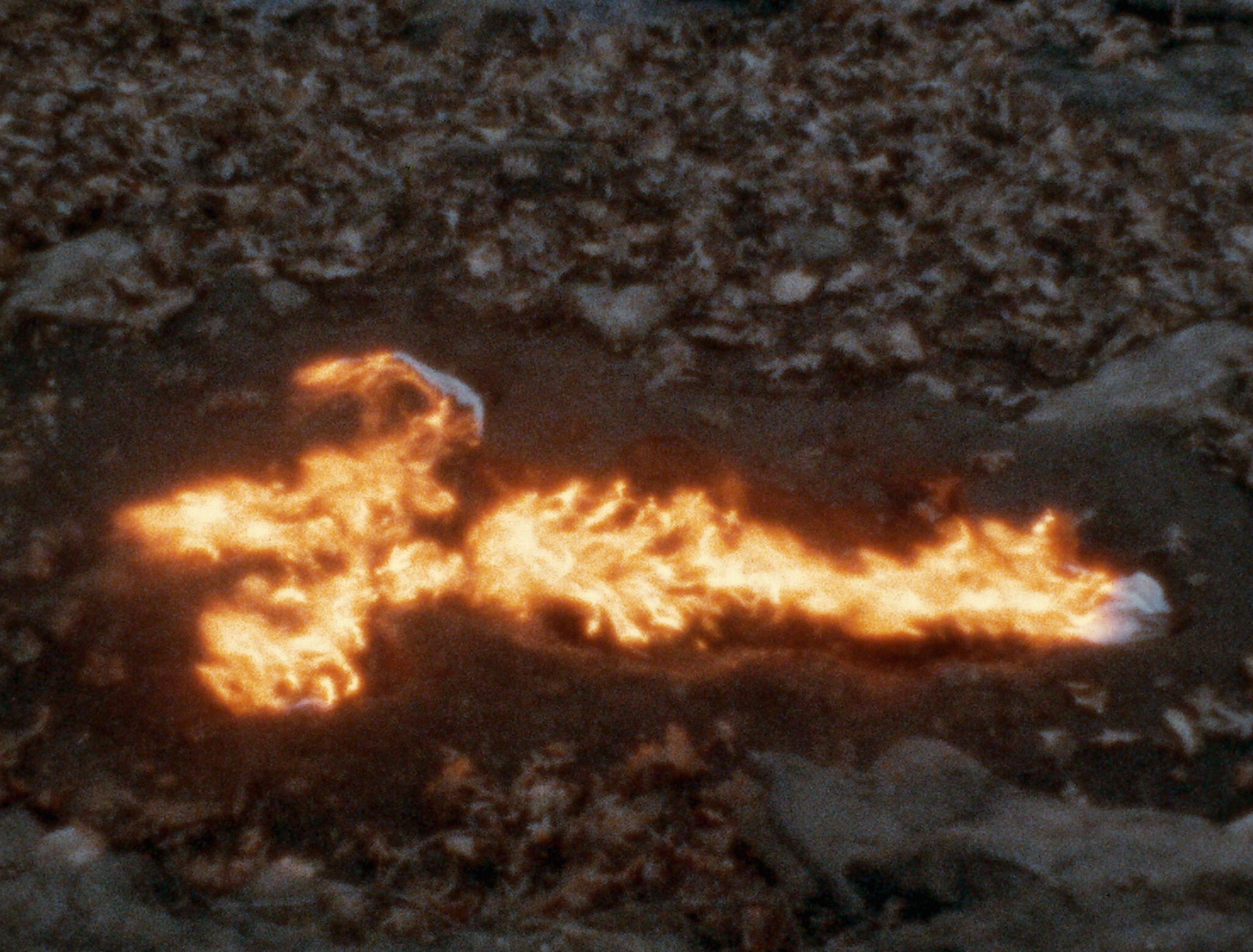What It Becomes | Art & Artists
Aug 24, 2024–Jan 12, 2025
What It Becomes | Art & Artists
Ana Mendieta
8
In this film an effigy is slowly consumed by fire, drawing on the element as a symbol of renewal. Meanwhile, another transformation has occurred off-camera in the translation of Ana Mendieta’s body to a hand-drawn outline. While certain examples from Mendieta’s Silueta Series show the artist performing actions in the landscape, here she substituted her figure with its delineation—made by tracing her form onto cardboard, which she cut, wrapped in a sheet, and set alight. For Mendieta, the Silueta Series presented a way to reconnect with her homeland of Cuba and to “become an extension of nature,” a reunion that she achieved here partly by mediating her body through drawing. Transforming her specific contours into a nameless silhouette, Mendieta explored erasure, displacement, and presence.

